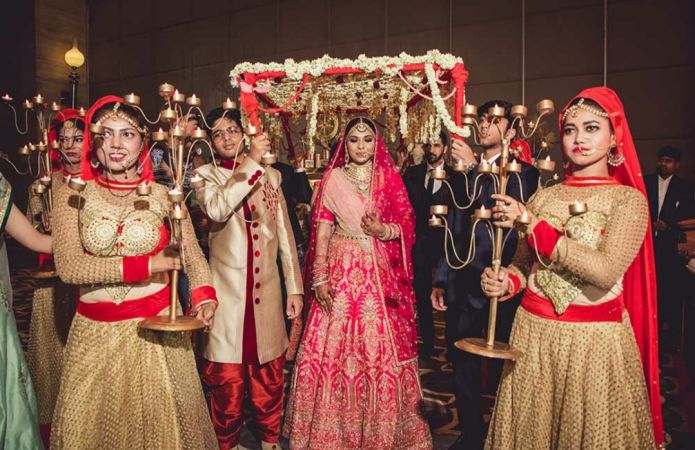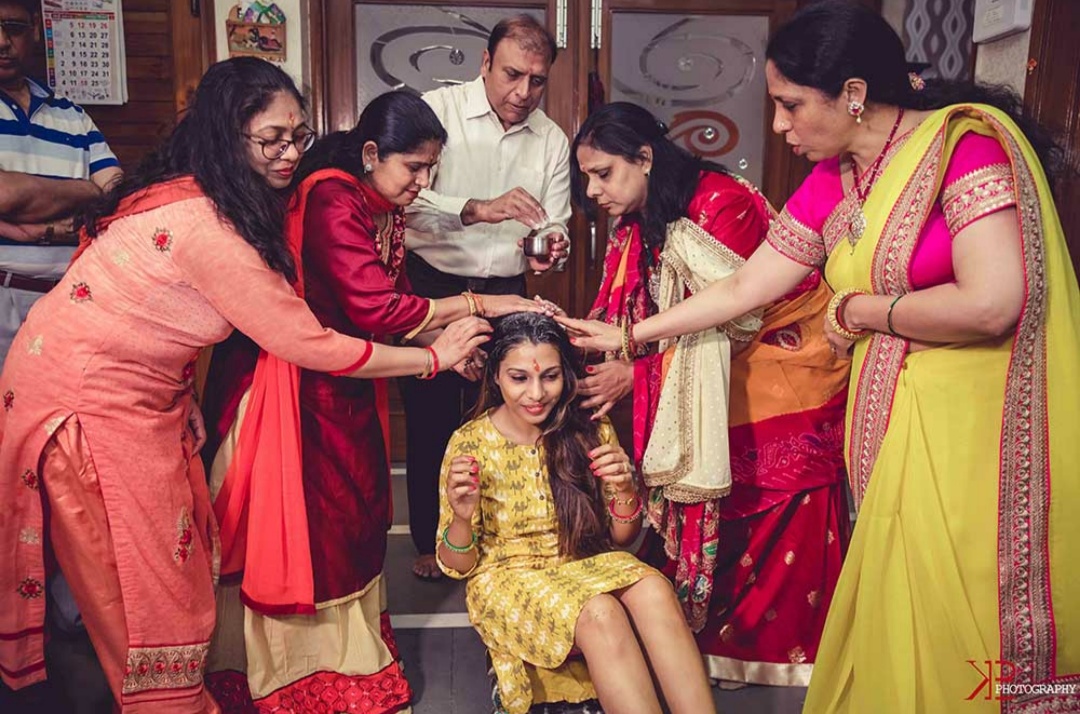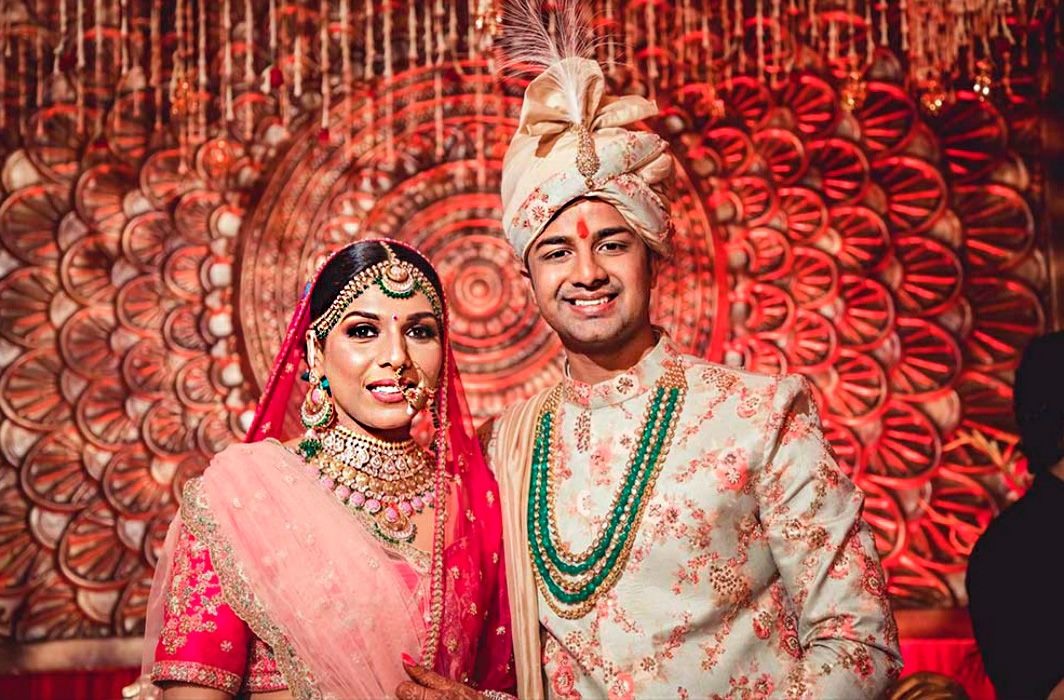Rituals of a Hindu Gujarati Wedding

For those who don`t know; Gujarat is a state on the western coast of India, very much known for their great culture & great vegetarian food. A Gujarati wedding is a ceremony full of rituals, traditions, where the union of two souls make it a true celebration.
Like I have been describing it in my last posts; a Gujarati wedding is a 3 to 4 days affair with very few dull moments between pre-wedding, wedding, post-wedding rituals and dances. These are ceremonies full of details and beauty. In the State of Gujarat there is a large diversity of wedding types depending in the family and the religion of the couple. These are traditions and rituals of a Gujarati wedding:
PRE-WEDDING RITUALS

· Ganesh Pooja – Both sides of the family gather to pray to Ganesh for the couple and a happy married life.
· Pithi: This is a ritual where the bride and the groom get applied a yellow sandalwood, turmeric and rosewater paste on their face, neck, arms, legs and feet by their closest friends and family (Tradition says this ritual must be prepared by the couple paternal uncle`s wife and the Pithi must be applied by the women of the household) to cleanse their body and get it ready for the changes and blessings that life is bringing forth.
· Mehndi/Mehendi: In this ritual Henna designs are applied on the groom`s hands and on the bride`s hands and feet. This ceremony gets usually done a couple of days before the wedding. Simple tattoo designs can also get applied to the guests. It is believed that the deeper the henna color turns on the bride`s hands the stronger love will be between the couple. Also the initials of the groom must be hided within the design and if he finds them before the wedding night is over, he’ll be the leader on the relationship.
· Sangeet: A celebration where both sides of the family gather to get to know each other, sing and dance before the wedding.
WEDDING RITUALS

All the wedding day rituals aside from the Baraat are hold in the mandva/mandap in front of a fire that has to be lit, maintained and extinguished by the Pundit. The Pundit will always be saying mantras through out the whole ceremony.
· Baarat or Varghoda: It is a wedding procession that starts at the groom`s house after his sister waives over his head a small bowl with coins wrapped in cloth with an etched Hindu Swastika to protect him against “evil eye” . The groom usually rides an elephant or a female horse to the wedding venue with the company of his closest family and friends that walk and dance at the rhythm of the dhol (a double-sided barrel drum). At the entrance of the venue is greeted by the bride`s family who will receive them with garlands and prayers.
· Milni: The parents of the bride offer garlands to the groom and his parents and the mother of the bride applies tika on the groom`s forehead. This ceremony welcomes the groom and his family to the bride`s family.
· Antarpaat: This ritual is usually performed when the wedding has been arranged by the couple`s parents. The grooms walks to the mandva and once he is seated his face and upper body gets cover by a cloth; once the bride gets in and sits in from of him, the people who is holding the cloth will lower it down slowly and the couple will meet for the first time.
· Jaimala: The bride`s maternal uncle escorts the bride to the Mandva where the couple now will exchange garlands. This ritual combines traditions, values, and customs that make the marriage of the two families complete.
· Madhuparka: The father of the bride offers special mixed water (yogurt, honey…) to the groom and sometimes he also sprays with water his feet and body as a sign of humility.
· Varmala: The parents of the couple join the couple together placing a red or white thread their shoulders.
· Kanya Daan: This is the ritual where the bride is given away to the groom by her parents. The father of the bride places her daughter`s hand on top of the groom`s hand entrusting him with her happiness and well being.
· Hasta Melap: The groom`s dupatta and the bride`s saree are tied together to symbolize their union. The couple is blessed by their parents and other family members showering them with flowers and rice.
· Fire offerings: The couple puts ghee and rice to the fire saying mantras for abundance on their marriage.
· Mangal Pheras: Joined by their dupatta and saree the couple gives 4 circles around the sacred fire saying mantras, each circle meaning the goals of the human life. The first tree circles are led by the groom where he promises to provide welfare and happiness to the family and the last one is guided by the bride where she promises to take care of the house, the cooking and the financial responsibilities.
· Mangalsutra and Sindoor: The groom puts a sindoon on the forehead of the bride and ties the mangalsutra (gold necklace with black beads) around her neck as symbol that she is now a married woman.
· Kansar Bhaksha: The couple feeds sweets to each four times promising always to take care of each other.
POST- WEDDING DAY RITUAL

Akhand Saubhagyavati: Traditionally these are seven married women that are invited to the mandap to bless the couple saying the words Akhanda Sauvagyavati Bhava, meaning may your married glory remain forever. In western ceremonies the best girlfriends and female family members are the ones to get invited to whisper marriage advices to the bride.
Ashirvaad: Couple asks for blessings to the elders of both families and then touch the feet of their parents as a sign of humility.
Reception: A reception is thrown to celebrate the union of the families. Everybody gathers together for a feast.
Vidaai: When the reception ends the bride gives a tearful goodbye to her parents, siblings, relatives and friends to start a new life in her husband`s house.
The first steps of the bride in her new house are considered auspicious, so the mother In law places a vessel filled with rice at the entrance of the house and the bride must knock the vessel down with her right foot spilling the rice as a symbol of wealth and that she understands her new duties and responsibilities.

















